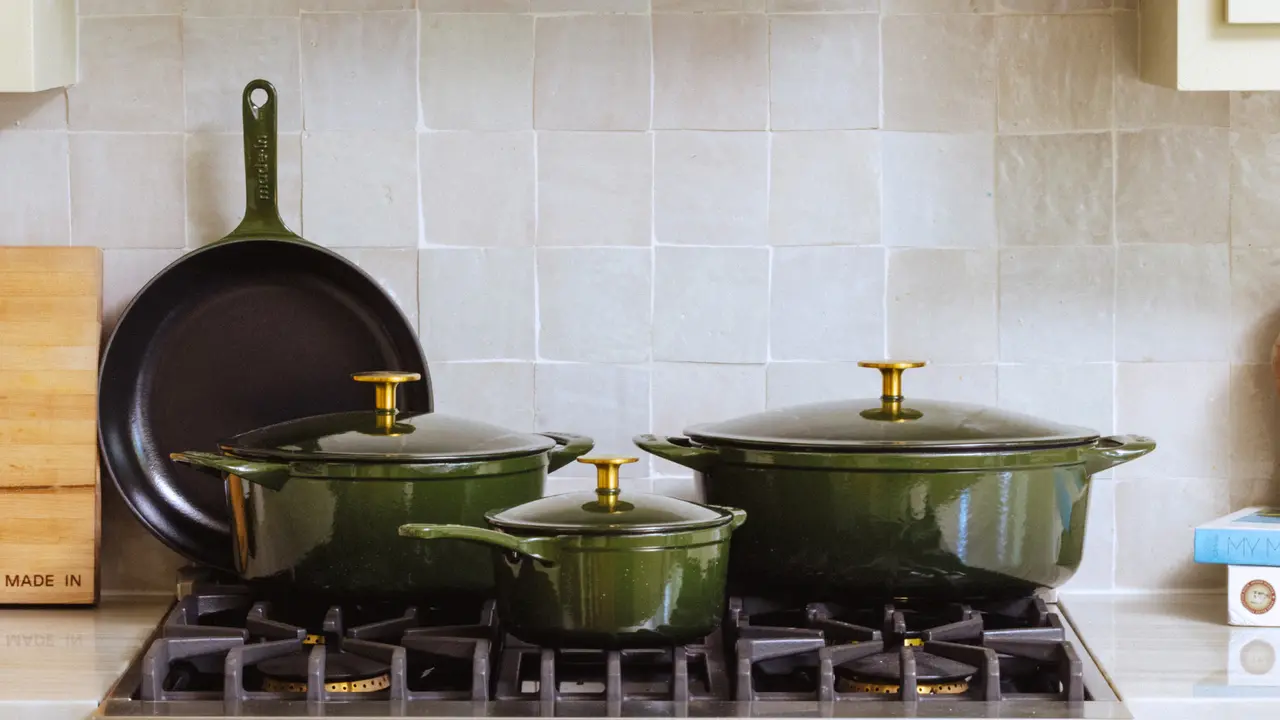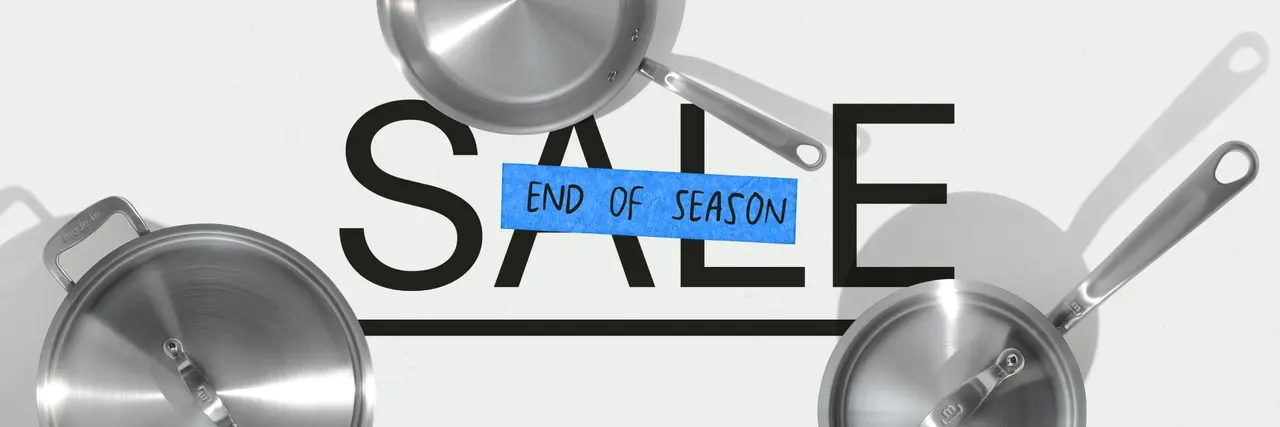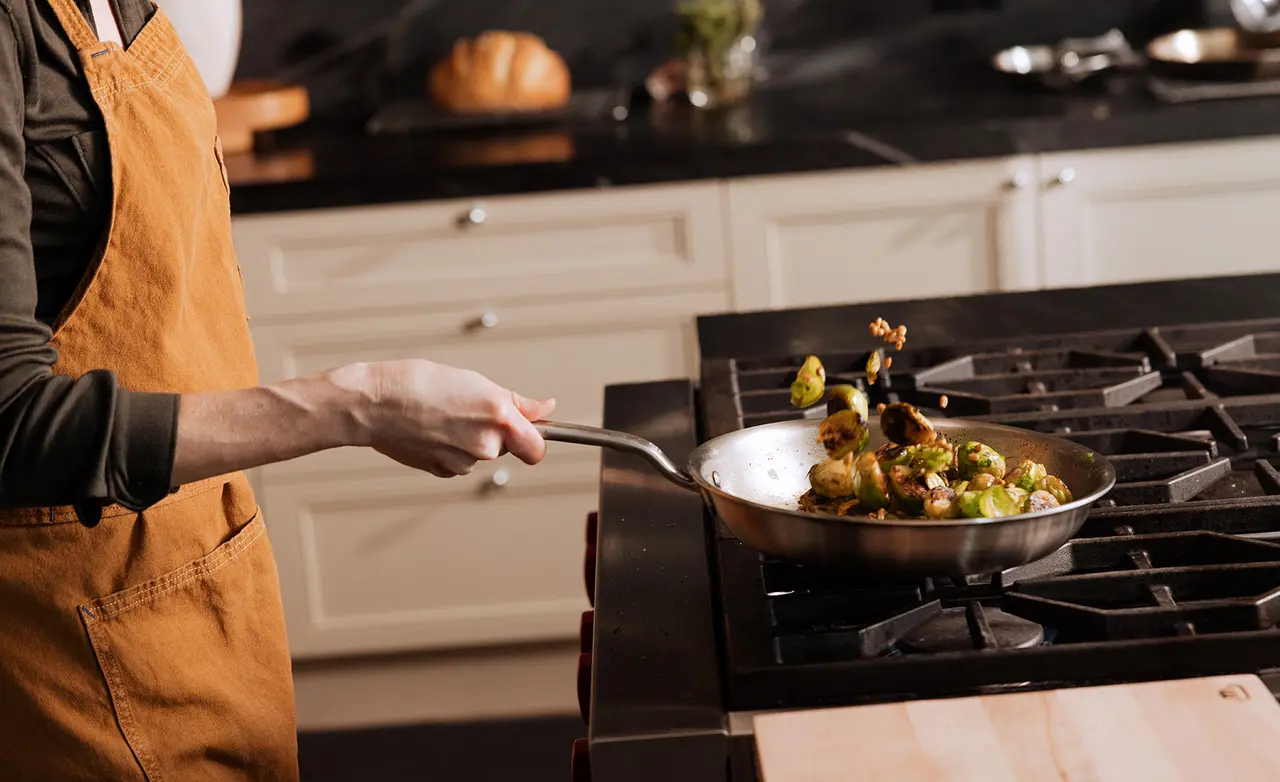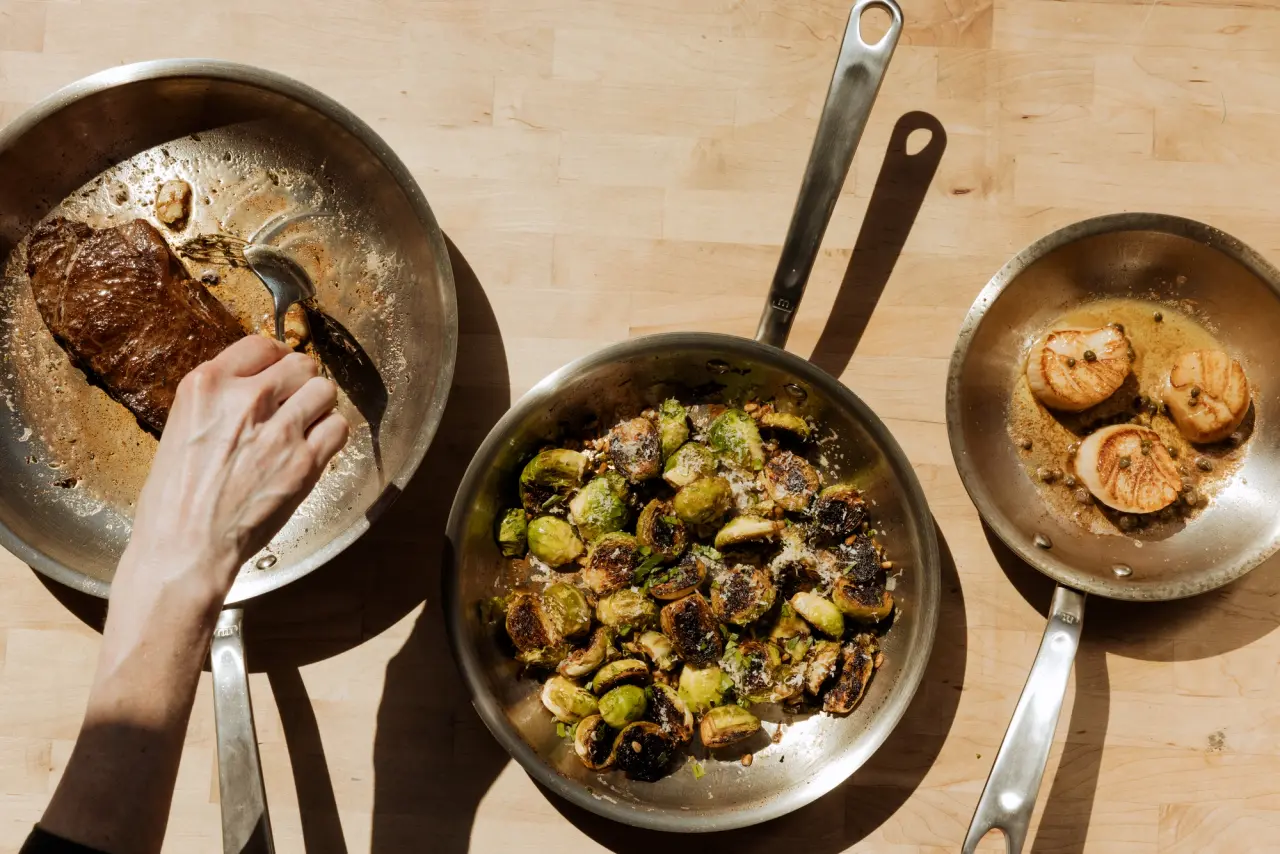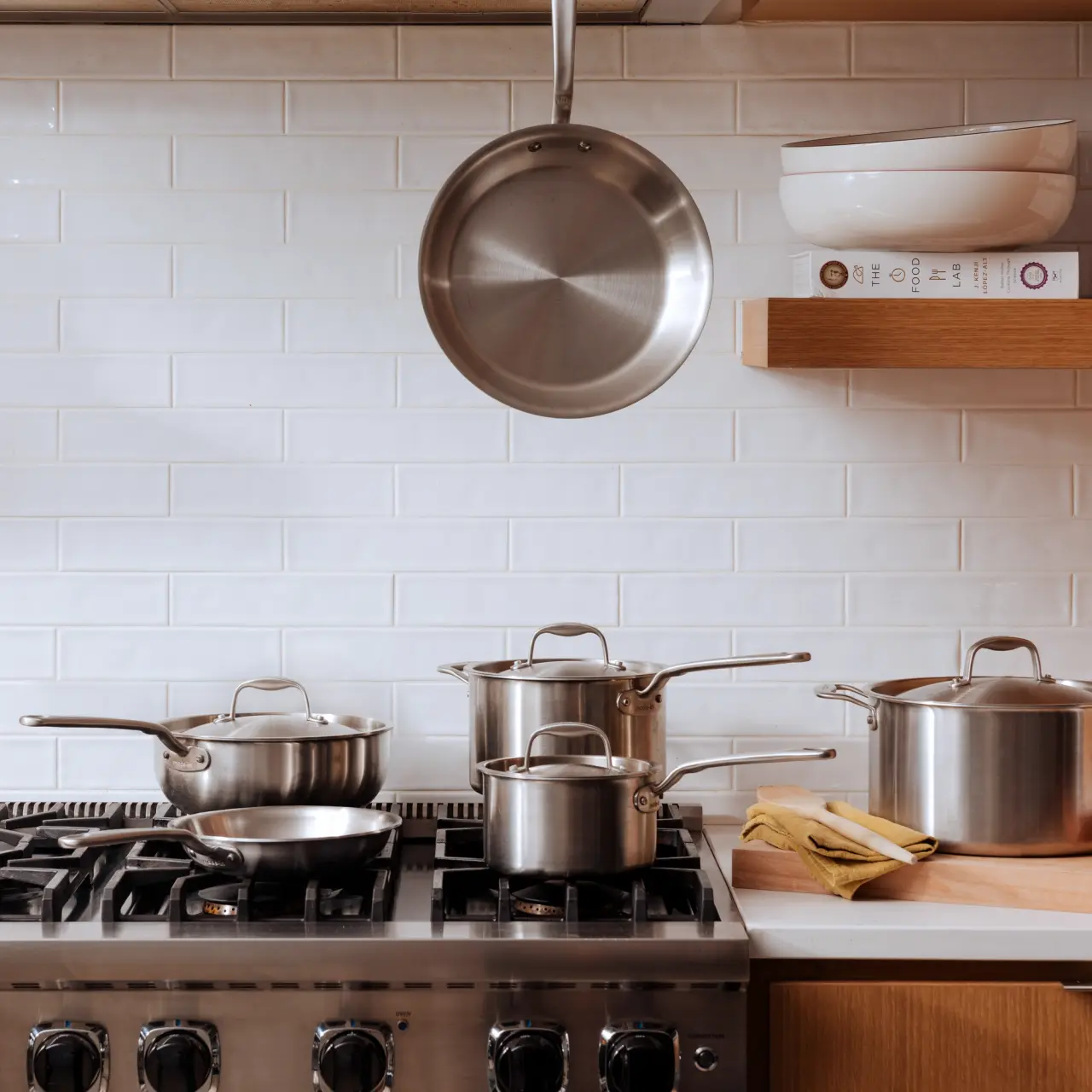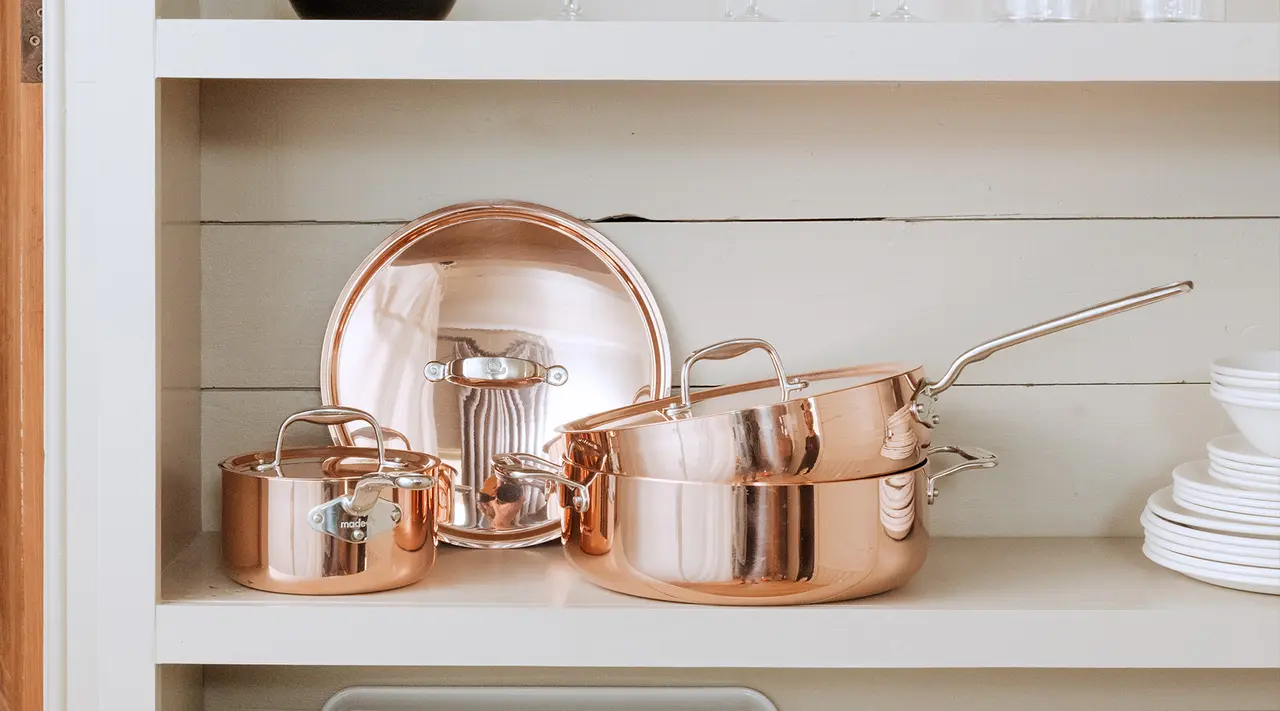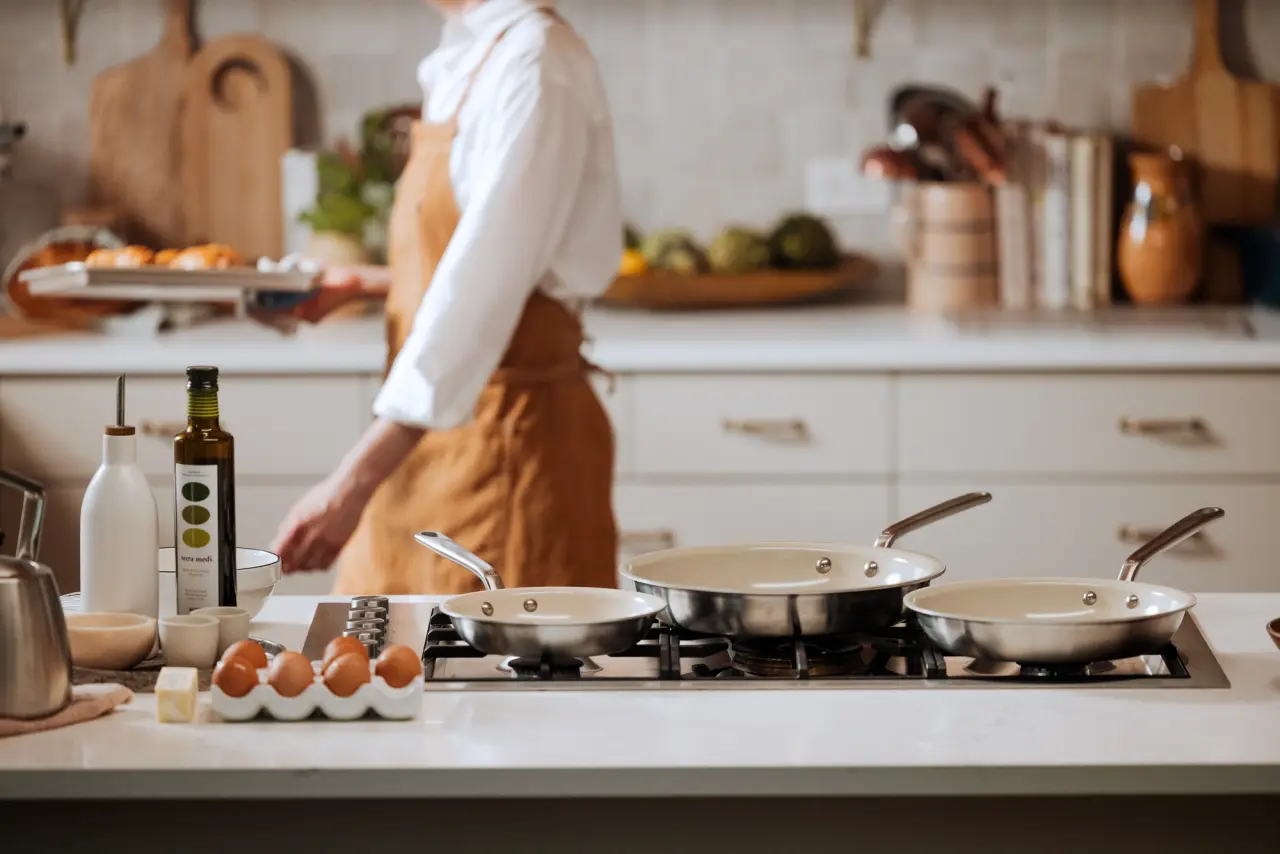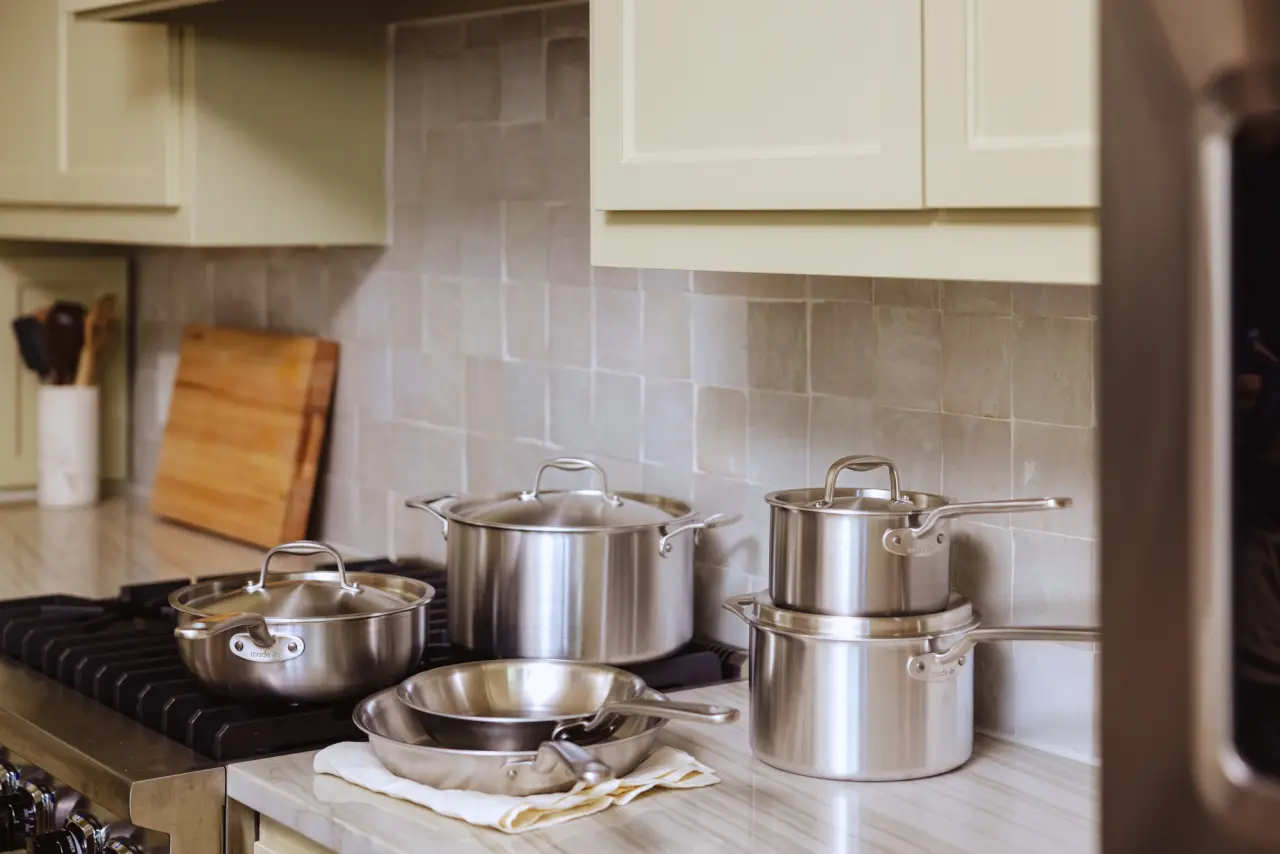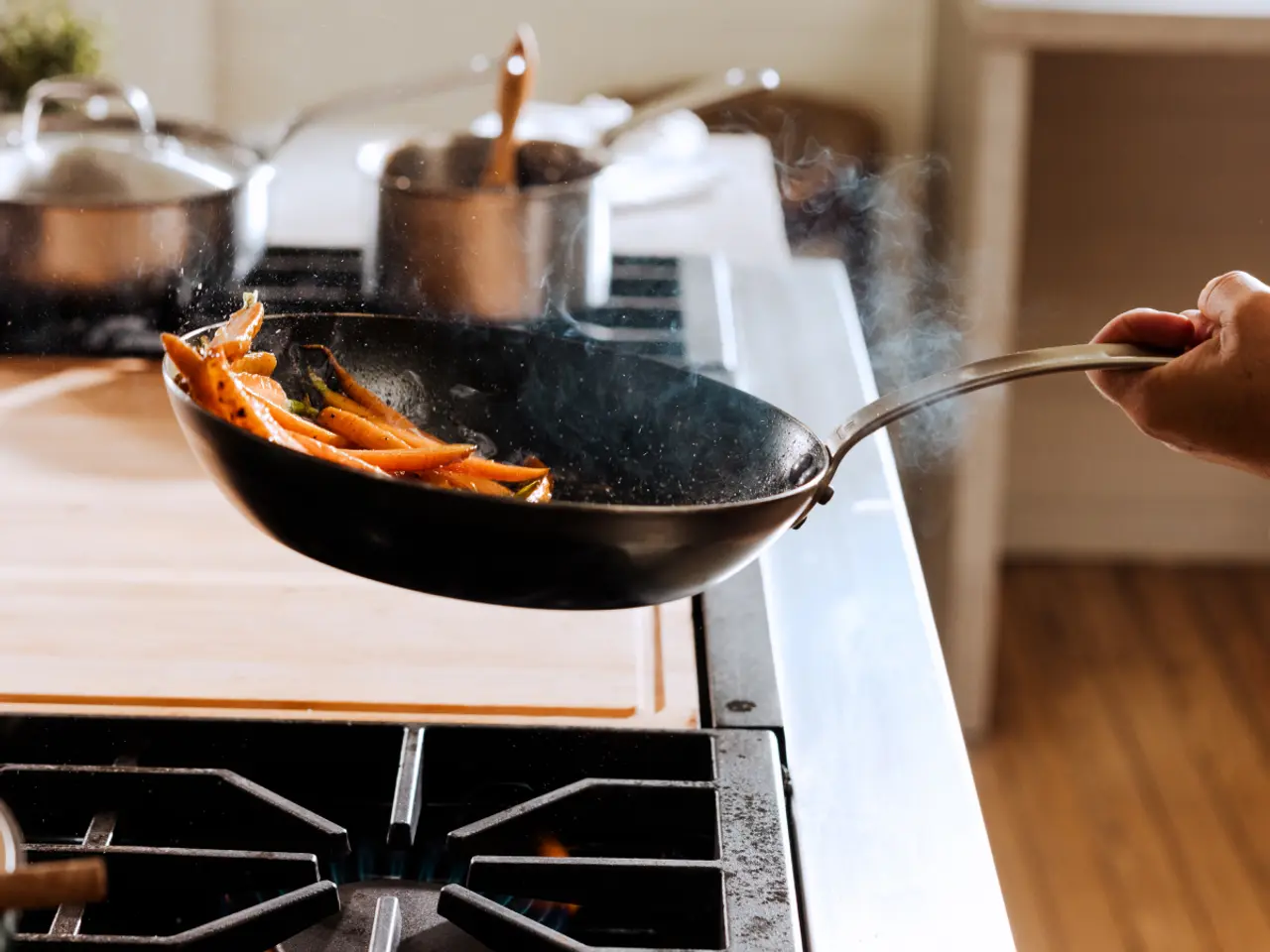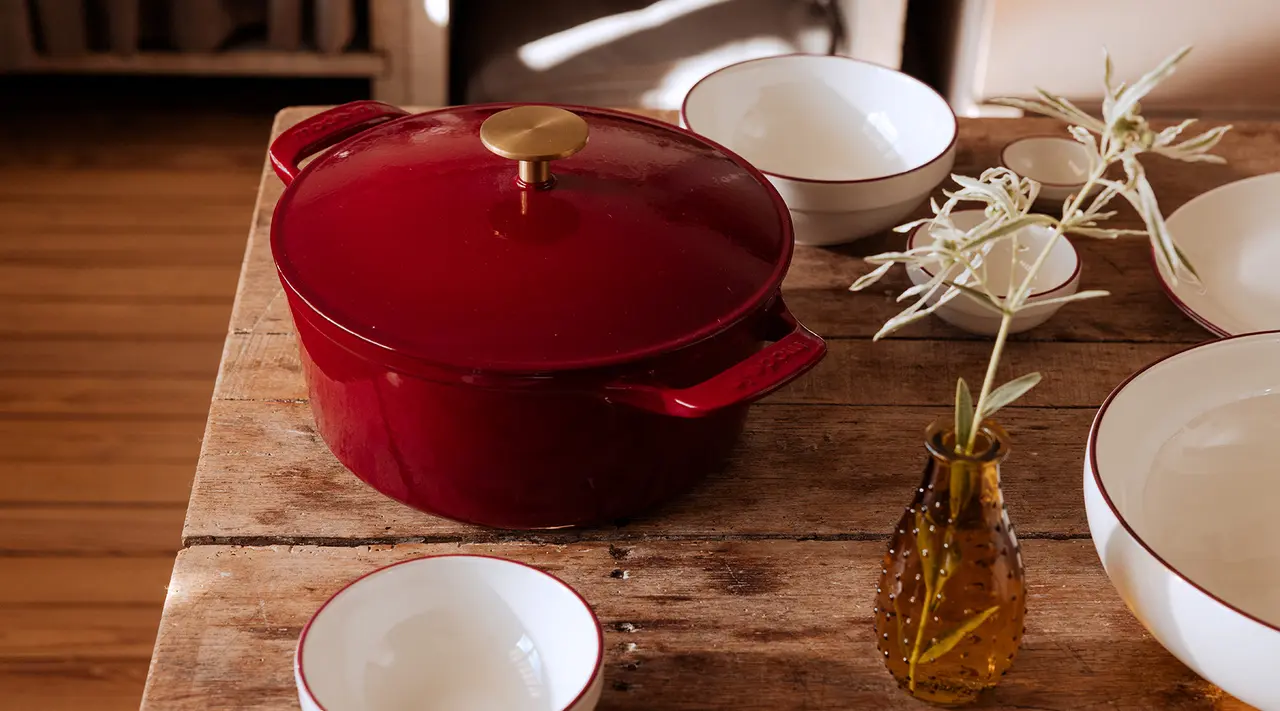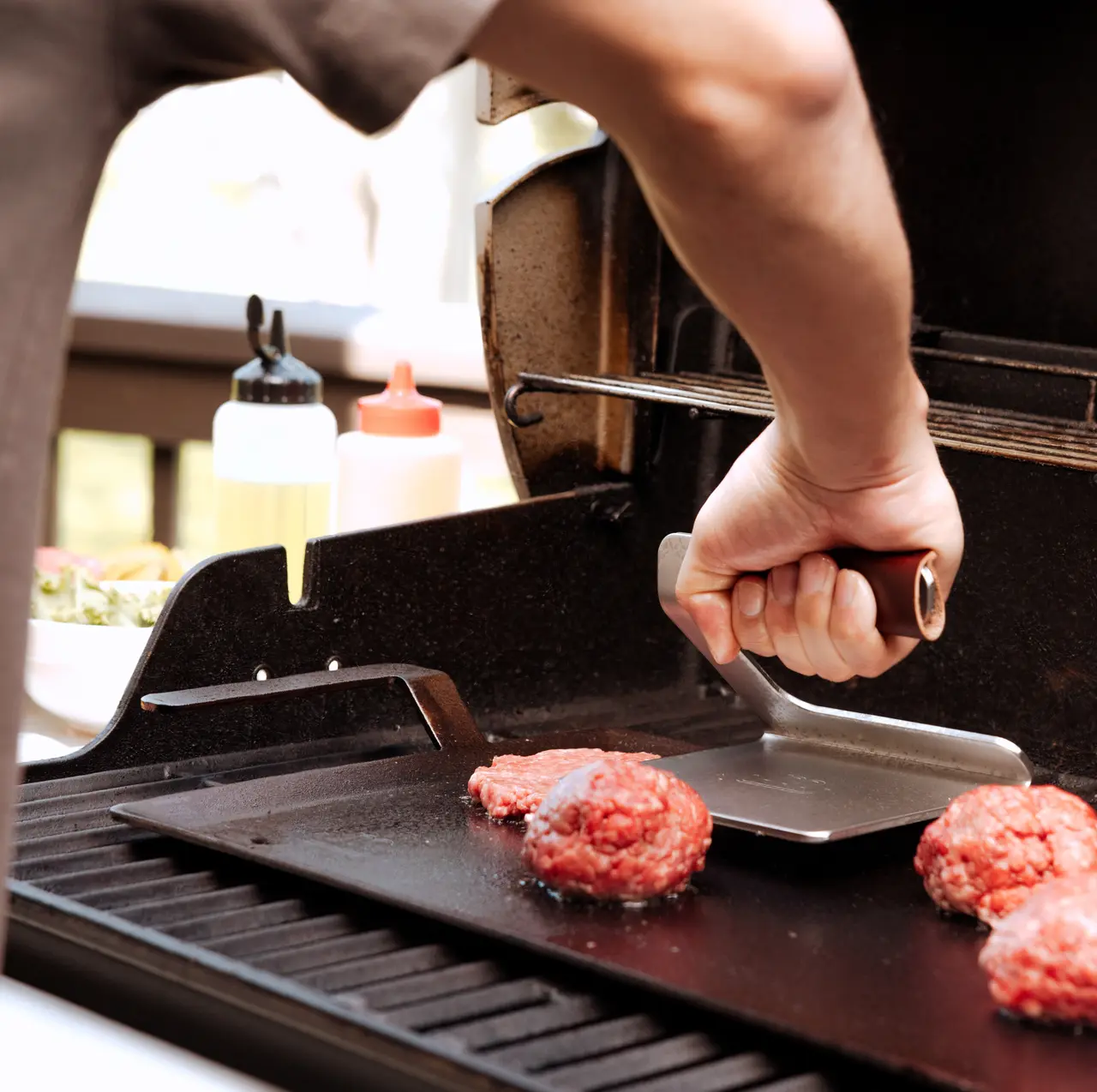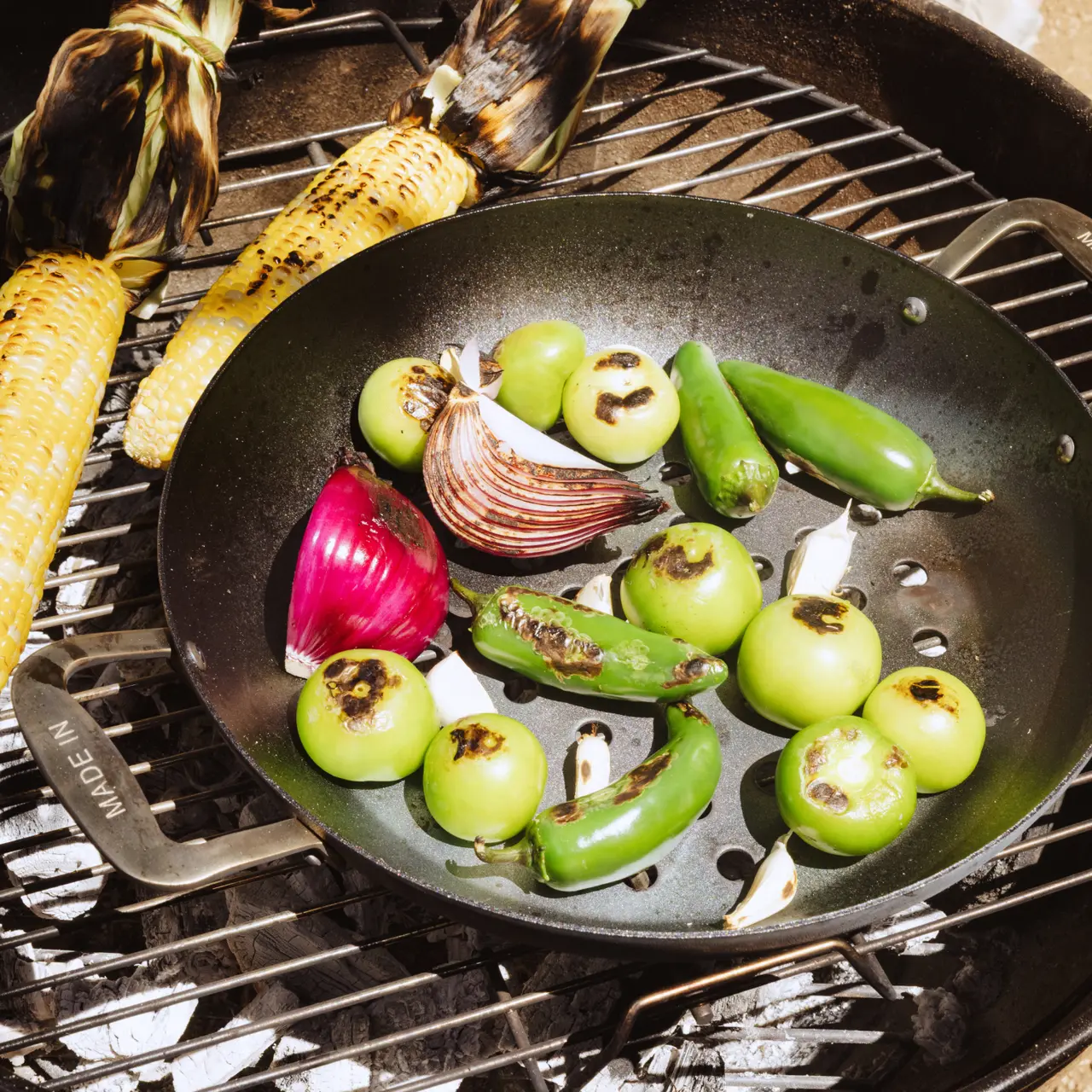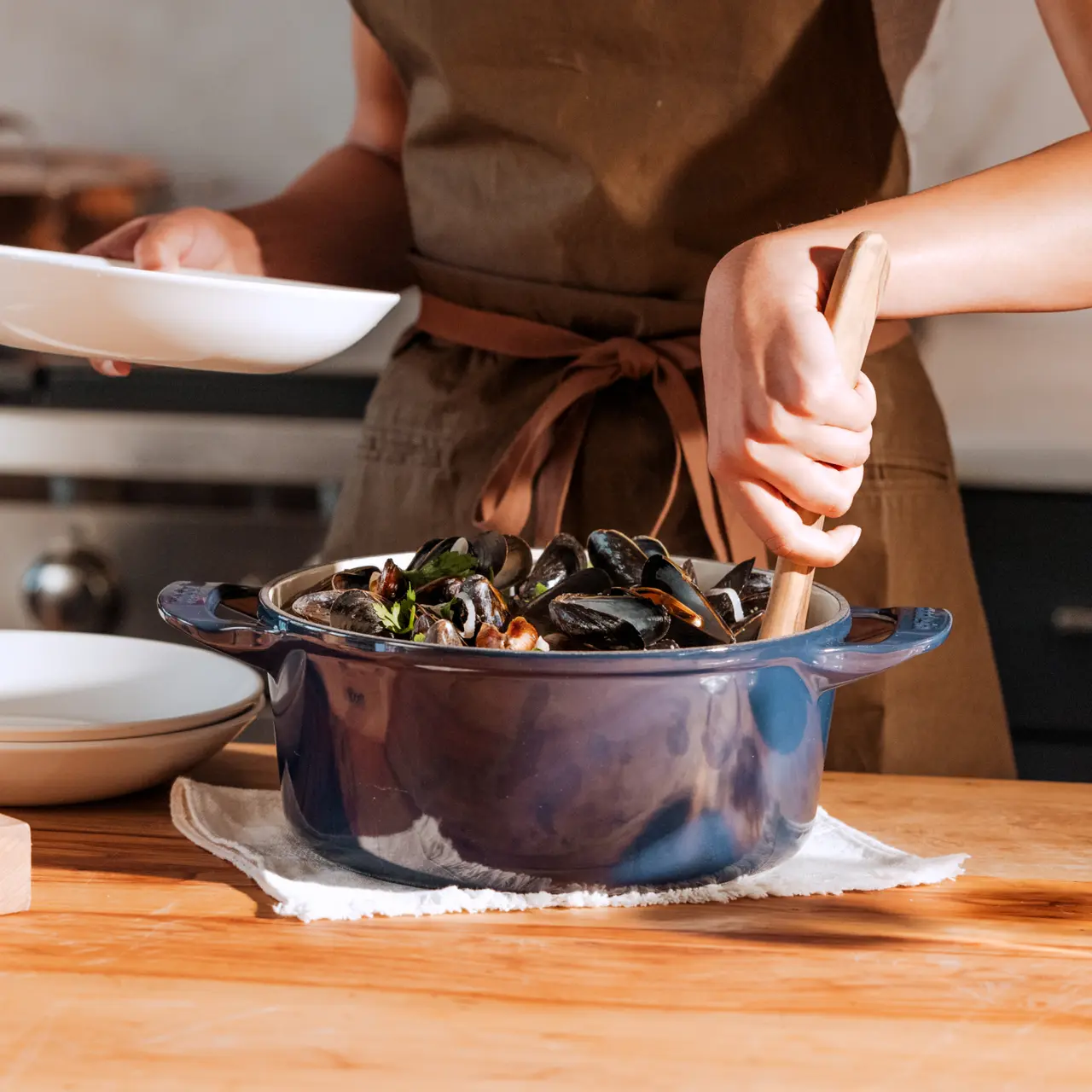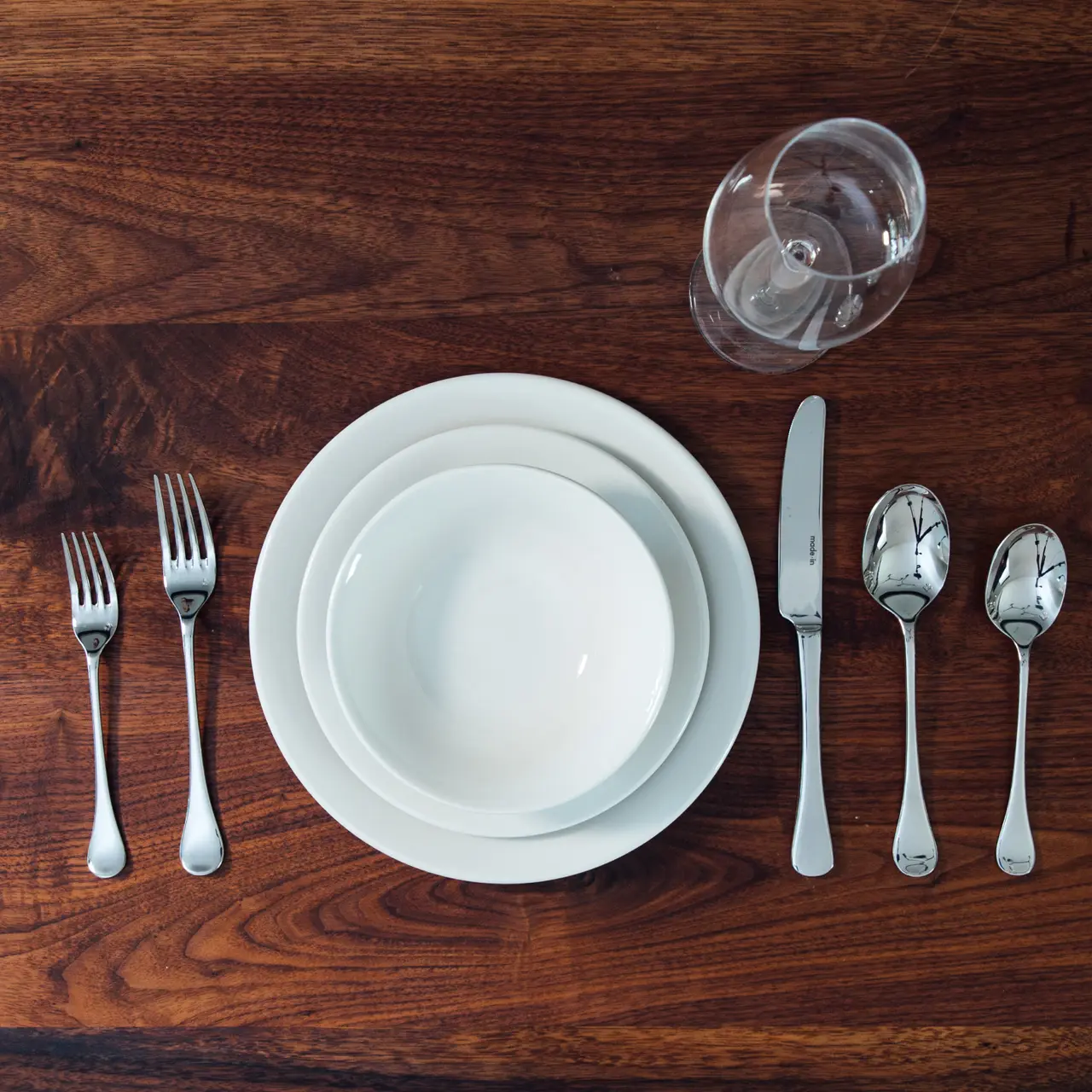Carbon Steel vs Cast Iron: Which is Right for Me?
If you’re shopping for new cookware, you’re probably deciding between a few different options. Two popular, similar choices are carbon steel and cast iron. Both are super durable and versatile, and with proper care and use, both carbon steel and cast iron give you a naturally non stick cooking surface.
Between carbon steel and cast iron, which is the right tool for you? While carbon steel and cast iron share many similarities, there are a few key differences that will influence which you choose. We’ll discuss each in detail so that you can make an informed decision.
Carbon Steel 101
Carbon steel is an alloy—aka a mixture of metals—made from iron and carbon that is punched into thin, flat sheets and shaped into various types of cookware, including frying pans, roasting pans, woks, and griddles. That thinness is key, as it makes carbon steel incredibly responsive to changes in heat compared to Cast Iron, letting you better control the temperature of whatever you’re cooking. This also makes Carbon Steel about half the weight of Cast Iron, a feature that home cooks and chefs love. Lastly, Carbon Steel can handle rip roaring heat up to 1200F, so it is great for high heat cooking just like Cast Iron.
Pros of carbon steel cookware include:
- Durability
- Naturally non stick cooking surface
- Heat conductivity and responsiveness
- Works on a variety of cooktops, including induction
- Half the weight of cast iron cookware
Cons of carbon steel include:
- Hand wash only
- Learning curve for general maintenance
- It can seem intimidating to use
Cast Iron 101
Cast iron is an alloy, just like carbon steel, but with a higher percentage of iron. Cast iron is made by pouring the molten alloy into a mold, making for a much thicker (and heavier) piece of cookware compared to carbon steel. Cast iron’s thickness also means it retains heat exceptionally well, making it the ideal choice for braises, stews, and other long-cooking dishes that benefit from a constant temperature. You’ll see cast iron cookware in a variety of types, including pots, skillets, and roasting pans. Cast iron cookware is available in unfinished, seasoned, or enameled coating finishes. Proper use and care of unfinished cast iron will build up a naturally non stick cooking surface, similar to carbon steel, while the enamel-coated cast iron immediately renders the surface non stick and protects the cookware from rust.
Pros of cast iron include:
- Durability
- Naturally non stick cooking surface
- Heat retention
- Works on a variety of cooking surfaces, including induction
Cons of cast iron include:
- Heavy and potentially hard to maneuver
- Hand wash only
- Learning curve for maintenance
- Can seem intimidating to use
Side-by-Side Comparison
Let’s compare carbon steel vs cast iron to see how exactly they stack up.
Heat response: Carbon steel heats up and responds more quickly to temperature changes than cast iron.
Weight: Carbon steel is significantly lighter than cast iron, making it easier to move around and transition from stovetop to an oven or grill.
Non-stick seasoning: Carbon steel and cast iron both need to go through a process called “seasoning” to build up the patina that makes them naturally non stick.
Maintenance: Carbon steel and cast iron both need to be cleaned, dried, and stored properly to maintain their seasoning and avoid rusting.
Versatility: Both carbon steel and cast iron can be used in the oven, on a variety of stovetop surfaces (including induction), and on a grill or vampire. Carbon steel excels at stovetop cooking, while cast iron does better in slower oven methods like braising, baking, and roasting.
Which Is Right for You?
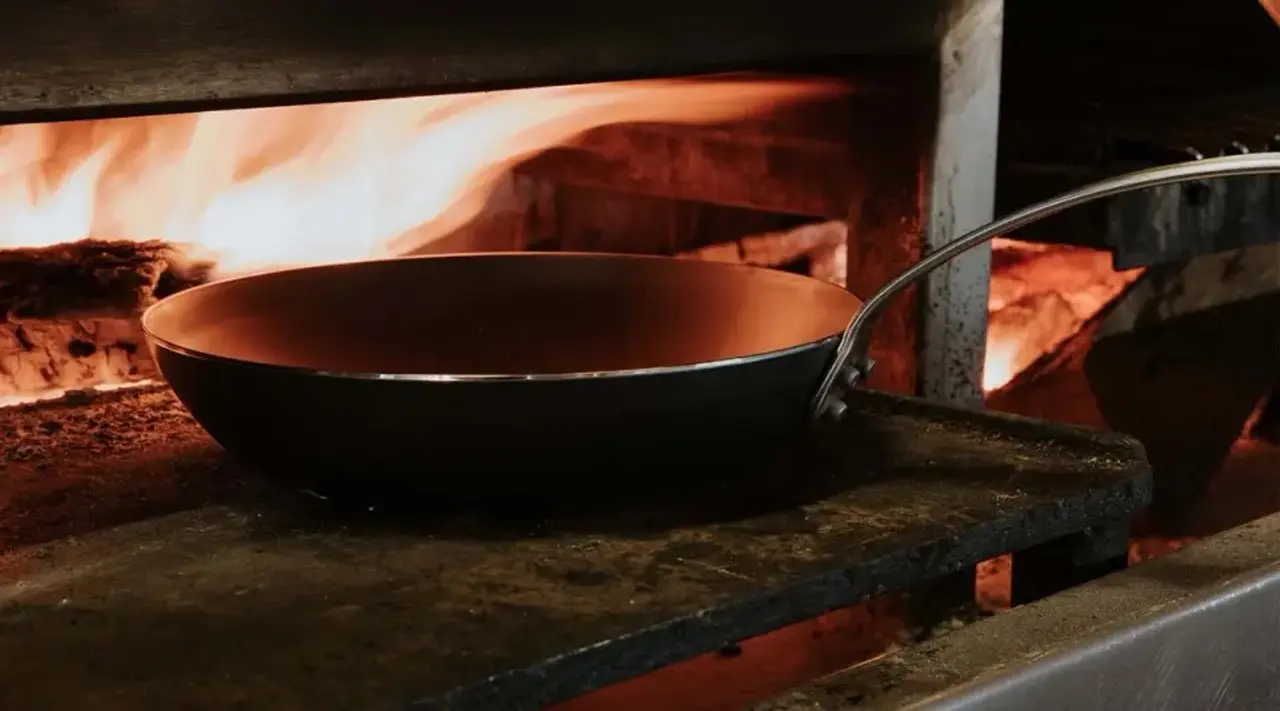
To determine whether carbon steel or cast iron is better for you, consider what type of cook you are (or aspire to be!). If you’re a weeknight speed-cooker, love to quickly sear a steak, or revel in a skillet of crisp-tender veggies charred around the edges, then carbon steel is for you. You would especially like the Made In 12” Carbon Steel Frying Pan, the largest of Made In’s frying pan options, which provides plenty of room to sear and sauté. Carbon steel excels in everyday cooking, especially on busy weeknights.
Because carbon steel weighs less than cast iron, you can also take it easily from stove to grill or oven, offering even more versatility. You can use a frying pan on a grill or over a campfire, but we also highly recommend the Made In Carbon Steel Griddle, designed to give you a restaurant-like experience of cooking on a flattop.
If you’re into a lazy Sunday-afternoon with a long, slow cooking project, glass of wine in hand, tending to a braise over a period of hours, then go for cast iron (preferably one of Made In’s Enameled Cast Iron pieces, so you can make a nice red sauce, too). Cast iron works best for low, slow, stable cooking methods.
Why Chefs Love Made In Carbon Steel
Founded in 2017, Made In is dedicated to making the highest quality cookware around, including carbon steel. We launched the first Made In Carbon Steel Pan when our company was only a year old and have continued to add new, innovative products to the Carbon Steel Collection. We thought through every detail, including curved pan walls and sloped handles riveted into the pan, rather than welded onto the edge. Made In pans and other pieces in the Carbon Steel Collection can withstand high heat without warping, are ergonomically designed, and facilitate easier cleanup when you’re done. Made In cookware is loved by serious home cooks and professional chefs alike.
Don’t just take it from us, though. As one reviewer recently noted: “I used to swear by cast iron, but carbon steel isn’t just a lighter alternative—it’s in a league of its own.”
Ready to Shop?
Whether you choose carbon steel or cast iron, Made In has you covered. Our high quality, durable carbon steel comes with a lifetime warranty, making it an excellent investment. Check out the Made In Carbon Steel
Collection to find your new favorite piece.
